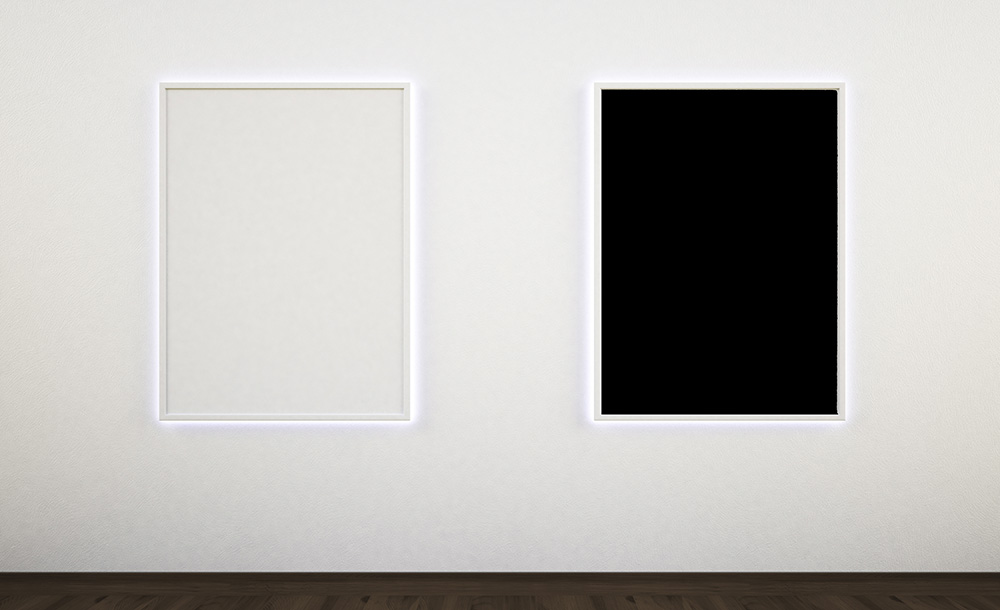«Sobre la fotografía» is the Spanish translation of the title of Susan Sontag’s landmark essay «On Photography», and the name that has been given to a compilation of texts written by Walter Benjamin on this topic, taken from some of his essays, reviews or newspaper articles. «Sobre la fotografía» is also the title of this diptych, which, like the writings of the two aforementioned authors, attempts to offer an essay on photography. The difference lies in the fact that in this case the analysis is visual, i.e., it is conducted using photographic creation itself.
We are thus presented with a work made up of two images, one white and the other black. On first glance, it seems to be nothing more than that. However, it is actually a reflection that explores the essence of photography: the process of image capture on one side, and the development process on the other.
The white image consists of photosensitive paper continuously exposed to light. Even now, framed and hung on a wall, it continues to absorb light, to be fed constantly. This endless exposure can alter the original white colour so that it takes on different tones. All of this forms part of the work and of the photosensitive experience of the photographic shot, the mission of which is to preserve the latent image taken from the silence of the void. The black image, on the other hand, is an image which, in counterpoint to the virgin white, has undergone the development process. It has been subjected to chemical reaction, treated and matured to become an image that is visible to the eyes of the spectator.
These two images are the beginning and the end of the photographic process, an ode to the very soul of photography, created in the photo lab but also in the exhibition hall.
«Sobre la fotografía» es la traducción que se ha hecho en español del título del ensayo de referencia «On Photography» de Susan Sontag, así como el nombre que se le ha dado a una compilación de textos que Walter Benjamin escribió sobre esta materia y que se hallan incorporados en algunas de sus obras, en reseñas o en textos periodísticos. «Sobre la fotografía» es también el título de este díptico que, de igual modo que los textos de ambos autores pretende hacer un ensayo acerca de la fotografía. La diferencia radica en que en este caso dicho ensayo es de carácter plástico, es decir, que se lleva a cabo a partir de la propia concepción fotográfica.
Así pues estamos ante una obra formada por dos imágenes, una blanca y otra negra. A simple vista nada más allá de eso. No obstante se trata de una reflexión que aborda la esencia de la fotografía: por un lado el proceso de captación y por otro el de revelado.
La imagen en blanco consiste en un papel fotosensible expuesto a la luz de forma continua. Aun enmarcado y colgado en una pared sigue absorbiendo luz, sigue siendo alimentado sin parar. Esta exposición sin cese puede alterar el color blanco original hasta virarlo a otros tonos. Todo forma parte de la obra y de la experiencia fotosensible de la toma fotográfica, cuya misión es perpetuar desde el silencio de la nada la imagen latente. La imagen negra, en cambio, es una imagen que en contraposición a la virginidad de la anterior, ha pasado por el proceso de revelado. Ha sido sometida a la reacción de los químicos, ha sido tratada, ha madurado hasta convertirse en una imagen visible a los ojos del espectador.
Ambas son el principio y el fin del proceso fotográfico, un viaje al alma misma de la fotografía que se fragua en el laboratorio pero también en la propia sala de exposición.



